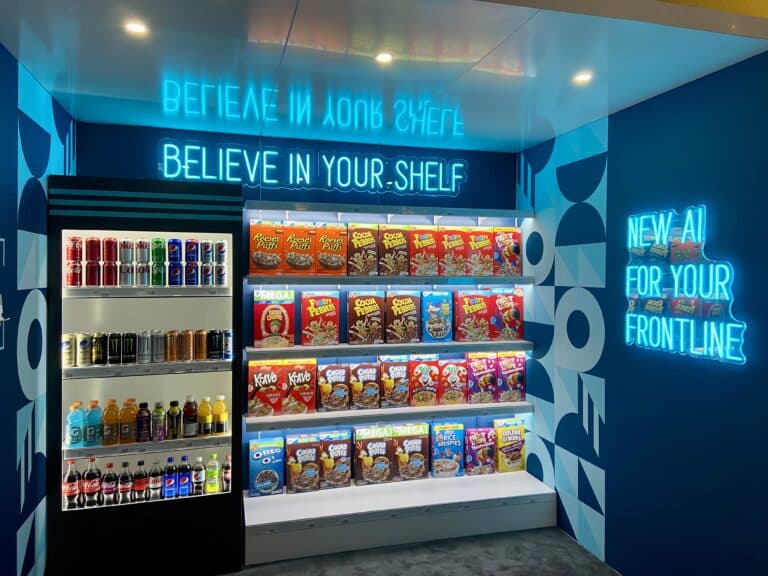
Alexander, who holds a PhD from the Glushkov Institute of Cybernetics, has assumed various roles at Form.com during his 13-year tenure, including Product Manager, Director of Technology, and CTO.
What is your role at Form.com?
I’m the VP of Product at Form.com. It’s my responsibility to ensure that Form.com as a product answers the real needs of the market.
My job is to create and execute a strategic roadmap based on feedback from our clients, market trends, and research. This helps us figure out the feature set that needs to be included in the product and determine where to focus our efforts.
Can you highlight some new features Form.com has released?
We consistently roll out updates and make incremental changes to the platform, but there were two especially important releases this year. The first was the Dashboards functionality, which we released in March, and the second was the new mobile app for Android, which went live in August.
The inspiration for the Dashboards functionality came directly from our customers. They wanted data analysis and visualization that could be dynamic and hands-on, something they could personally use to customize a snapshot of their data. The Dashboards functionality combines the power of data visualization power of business intelligence with an easy-to-use interface.
Any dashboard you create is very tightly connected to the forms you build with Form.com. Whenever you make a change in a form, you can see that instantly reflected in your dashboard. On top of that, we’ve built an easy interface that gets you started in a matter of seconds. For any questions you have about your data, you can intuitively drag, drop, and get the answer.
The other significant enhancement was Form.com for Android. We made incremental changes to the previous app over the years, but the new app is native to the platform. It takes full advantage of the Android platform’s capabilities, which allows us to provide some great new features and optimizations.
Are there any upcoming projects at Form.com that you’d like to showcase?
In addition to the updated Android app, we’re releasing enhanced apps for Apple/iOS and Windows. All of them are using the respective operating system’s native technology to provide better optimization and features.
For example, the one we built for Android uses all the native Android APIs. That architecture lets us talk directly to the camera and the GPS sensor, which allows us to create a much more responsive user interface. We’re using the same approach for the iOS and Windows enhancements, and they will receive the same improvements in performance.
Do you have any examples of a time you saw Form.com’s innovation in action for a client?
At the beginning of the year, we made a few road trips where we demoed our new Dashboards functionality to get customer feedback. We were sitting in a room with two VPs from one of our key customers. They were discussing the new form that they were planning to launch, and we were taking a rearview mirror look at the form that they ran last year.
One of the VPs said to us, “I wonder what this data trend looks like, we’ve never had any way to get closer to it.” Right in the middle of this meeting, I was able to drag the two relevant fields into their dashboard and view the answer to that question. And when they saw the chart, one of the VPs said, “Ah-ha! I told you so.”
The beauty of that story is that they were always wondering about this question, but it wasn’t critical enough to warrant them going to their BI team with it. But, they were still curious about it, and it took them less than a minute to realize that their assumptions were correct.
What trends do you see on the horizon for Form.com?
I can identify several trends in the market that are relevant to Form.com. Firstly, the way that mobile technology is transforming virtually all industries is a generational change. We see some sectors are struggling to attract a younger workforce. Many of these jobs are not what recent college graduates or newly certified professionals expected in terms of redundant, non-creative work.
Form.com works with one client that employs people at worksites that are essentially in the middle of nowhere. Workers have to spend months of their lives away from their families and their normal lives. Many of the tasks they’re responsible for are regular checks and daily routes, which involve walking around assets and ensuring that everything works properly. Before they started using Form.com, they had to spend a lot of time printing out papers, putting checkmarks on those papers, and scanning them back in.
The second trend is that people working with our solutions prefer to complete tasks in groups, and they prefer to share and collaborate. They expect the solution they’re using to facilitate that, to allow more than one person can work on the task at any given point in time.
They want to be able to reassign tasks to other people, easily share the results of their current assignment, ask questions, and get responses. This social collaboration aspect is playing a significant role in the future of enterprise software, and it will be a part of Form.com in the future as well.
The third trend is in how people aren’t working nine-to-fives anymore. They want to be flexible and choose their working hours. The gig model that Uber initially created, the one that is mimicked in many other industries, allows anyone with a smartphone to receive and complete assignments on their own schedule. I think this is going to start happening in other industries, too, not just in those providing rides or basic errands.
For example, take companies that provide insurance claim inspections. When you don’t have the employees to inspect all your claims, there will be situations where you could leverage the gig economy. You could offer the job to people who have received some basic training, and they can go to the location, fill out the form, take pictures, and get paid. I think this model could be very effective for many organizations.
These three trends are fueling the enterprise’s mobile transformation, and Form.com is ready to take advantage of them. We design products around how our clients actually want to use the technology. We build solutions in ways that are engaging and natural so that people can complete their tasks rather than waste their time on complicated software.
You’ve been with Form.com for almost 13 years. What’s the best part of working here?
The best thing about working at Form.com is the ability to see how technology can change these massive organization in a positive way. Seeing Form.com’s technology used in the field by thousands of people, saving them time, allowing them to do work more efficiently and focus on the most important in their jobs—that’s very inspiring.
Also, realizing that the data Form.com collects help multi-billion dollar organizations make better and smarter decision is another things that helps me wake up in the morning and be excited about another new day on this job.





